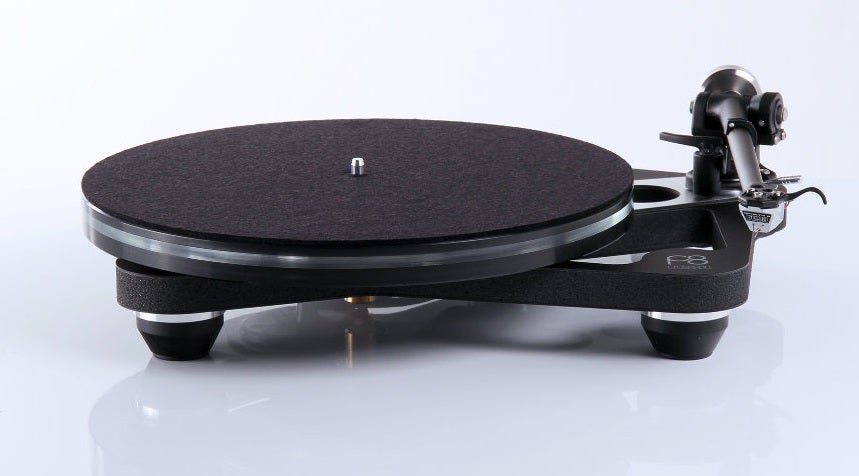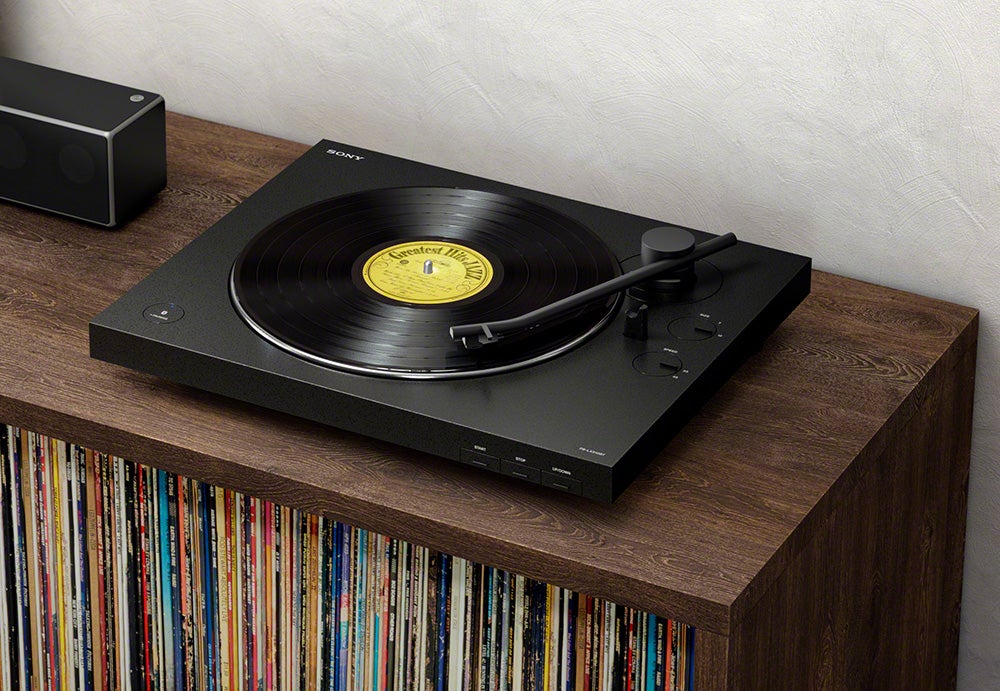Bang and Olufsen Beosound Emerge Review
A slim volume that’s not short of volume
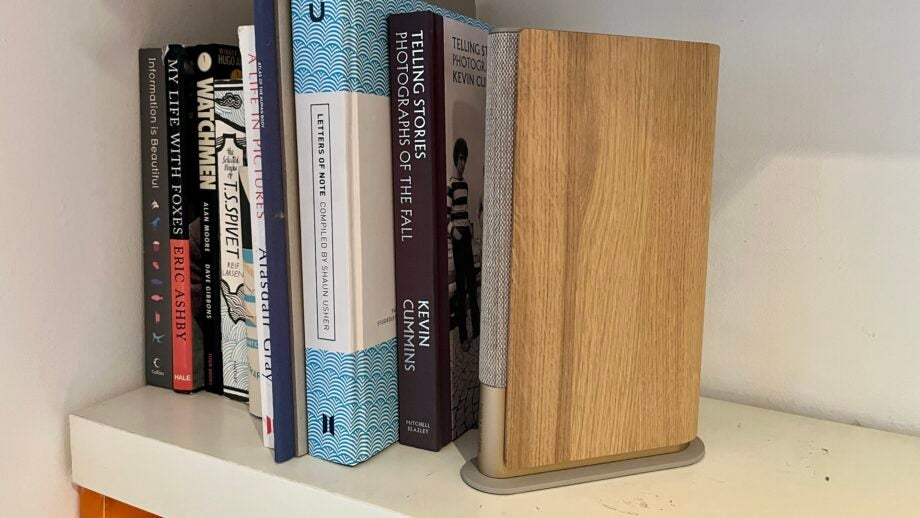

Verdict
There’s lots to like about the Beosound Emerge, not least its remarkable form-factor and convincingly unified sound. It’s far from short of competition, but the fact that it competes on a level playing-field where price is concerned is another cause for celebration.
Pros
- Elegant, discreet, up-market looks and finish
- Coherent, convincing sound
- Great control options
Cons
- Slightly rolled-off treble reproduction
- Somehow gets louder without sounding any bigger
- Numerous worthwhile alternatives
Availability
- UKRRP: £669
- USARRP: $799
- EuropeRRP: €749
- CanadaRRP: CA$999
- AustraliaRRP: AU$1450
Key Features
- Active Room CompensationAutomatically compensates for room acoustics
- Stereo pairingAdd another Emerge to create a stereo pair
Introduction
A ‘bookshelf’ speaker that genuinely looks like it belongs on a bookshelf? A Bang & Olufsen product that doesn’t immediately require a load of caveats regarding its asking price? Has the world gone mad?
The Bang & Olufsen Beosound Emerge is on sale now, and in the UK it costs £669. Customers in America will have to part with $899, while in Australia it sells for AU$1449. That’s for the gold tone finish of our review sample – when it originally launched there was a less expensive (£539 / $699 / AU$1199) black anthracite alternative available, but that is no longer an option.
For once, then, here’s a Bang & Olufsen product that isn’t overtly pricier than the products with which it would seek to compete. Bowers & Wilkins, Devialet and Naim, for example, all have speakers at this sort of money – so having got the pricing aspect spot on, all B&O needs to do is nail the performance bit and the Emerge is in business.
Design
- An actual, literal bookshelf speaker
- Aluminium, oak and Kvadrat textile
- 255 x 67 x 165mm (HxWxD)
Plenty of wireless speakers call themselves bookshelf speakers – but the Beosound Emerge takes the description literally. It’s designed to look like a book (a big, luxurious edition, certainly – but a book nevertheless), and Bang & Olufsen suggests its compact footprint and 180-degree sound dispersal makes it ideal for tight space. Such as a bookshelf.
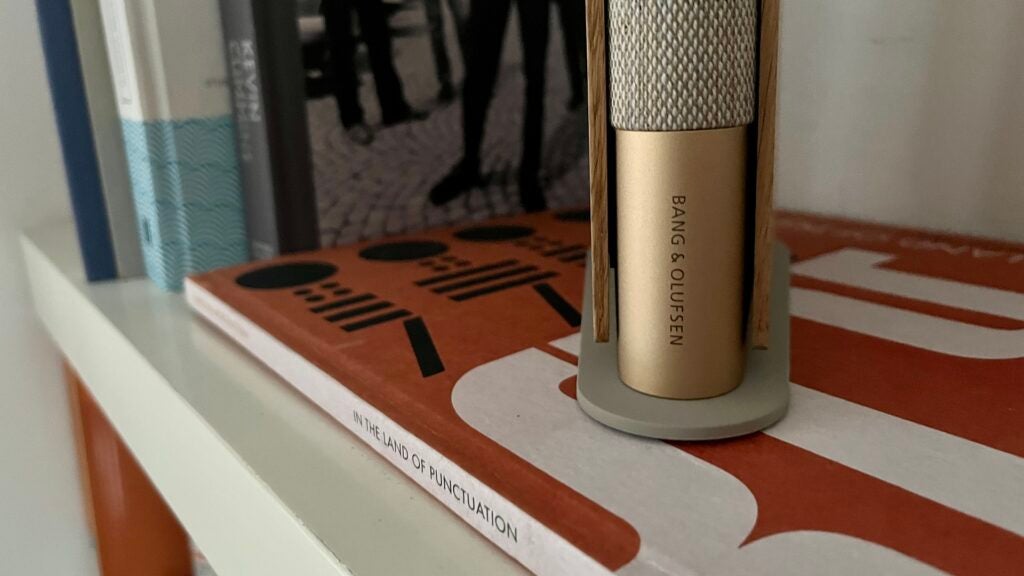
In terms of materials, the Emerge is appointed about as well as you’d expect from the brand. A combination of rose gold pearl-blasted aluminium, natural oak and the ubiquitous Kvadrat acoustic cloth certainly makes for an indulgent look – and there’s a fair degree of tactility about this speaker, too. The brand logo running up the spine of the speaker is a witty touch.
It’s a similarly predictable story where build quality and finish is concerned. The Emerge is constructed with obvious attention to detail and no little professional pride.
Features
- 120 watts of power
- Voice-, app- or touch-control
- Modular design
The Emerge features a three-strong complement of speaker drivers, arranged to deliver the widest possible spread of sound. A 101mm bass driver is powered by 60 watts of amplification, while the 37mm midrange driver and 15mm tweeter get 30 watts each. The Beosound has active room compensation and adaptive bass linearisation available in the Bang & Olufsen control app (free for iOS and Android) to help adapt its output relative to its position.
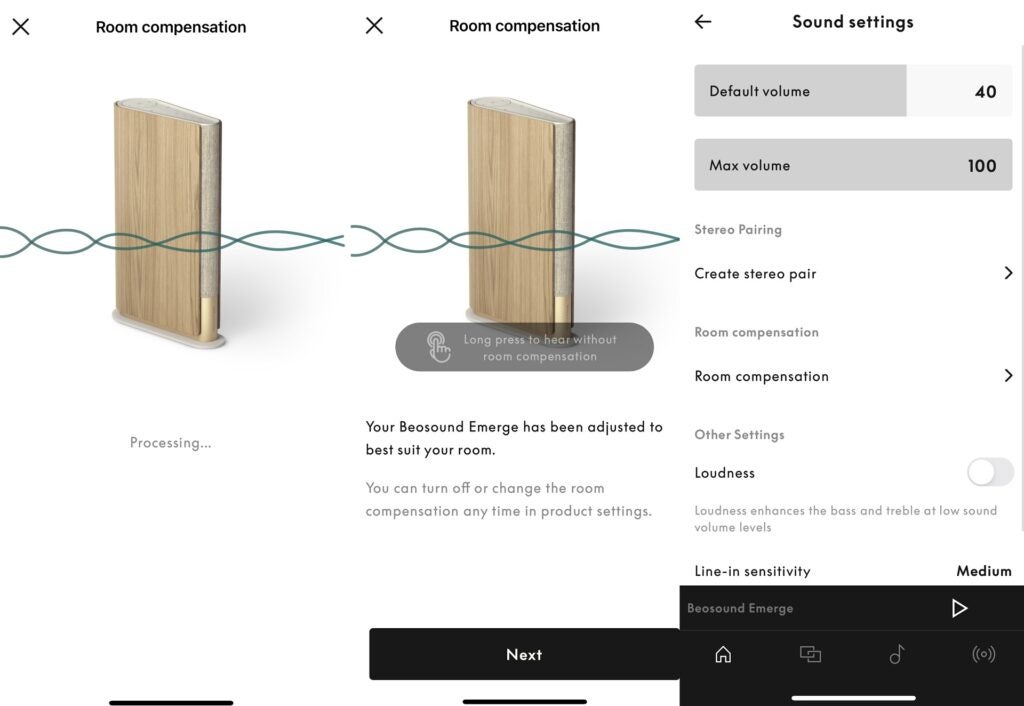
The app itself is good-looking, stable and useful – three things that can’t automatically be said about the equivalent apps of Emerge’s most obvious rivals. The graphic EQ adjustment, for example, is not only pleasing to use but also can make effective, worthwhile changes to the sound of the speaker.
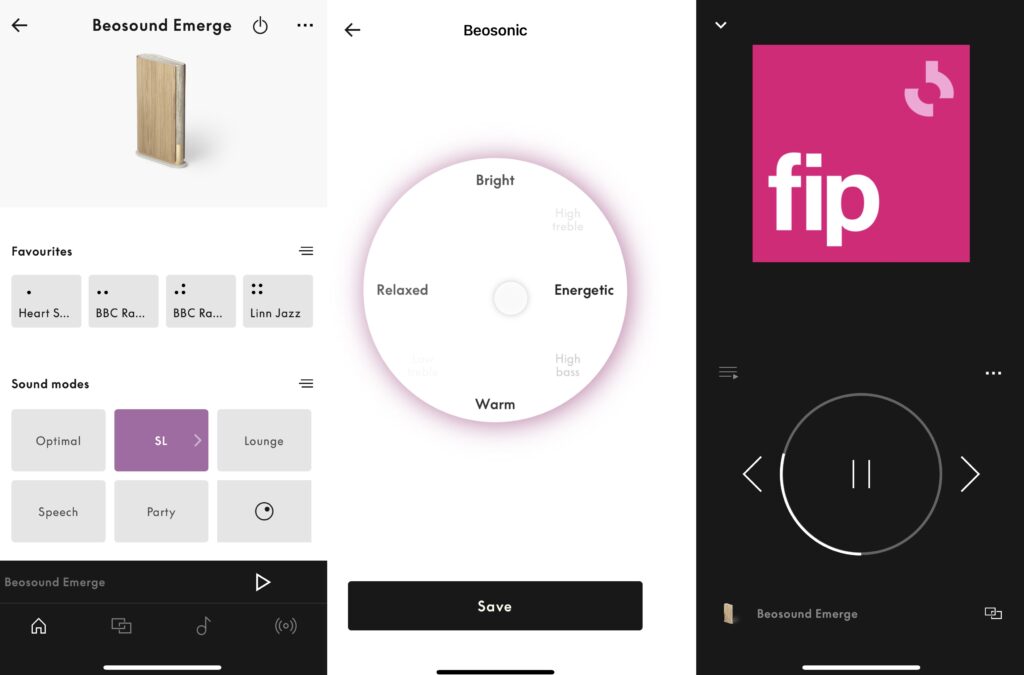
Control is also available from a touch-surface on the top of the Emerge – this interface, it’s fair to say, is a more qualified success. They’re overly sensitive and altogether too responsive, to the point they’ll make you trepidatious about operations that should be straightforward – adjusting the volume level, for example.
The physical gap between the volume up/down and play/pause controls isn’t sufficient, either, so it’s all too easy to engage one function when intending to use the other. To be honest you’re better off with the app, or with the integrated Google Assistant – it’s responsive and reliable.

Wireless connectivity is via Bluetooth 5.0. Bang & Olufsen isn’t saying which codecs are supported, but if there’s any compatibility beyond SBC and AAC I haven’t been able to access it. Spotify Connect, Chromecast and Apple AirPlay 2 are available, thanks to dual-band Wi-Fi.
The splendid Bang & Olufsen Radio streaming service is also accessible via the app, and it’s possible to integrate your favourite streaming service (as long as it’s Deezer), too. Two Emerge can be wireless joined to create a stereo pair, which then puts the B&O into competition with some very capable (and similarly priced) wireless stereo speakers from the likes of KEF and Q Acoustics, of course.
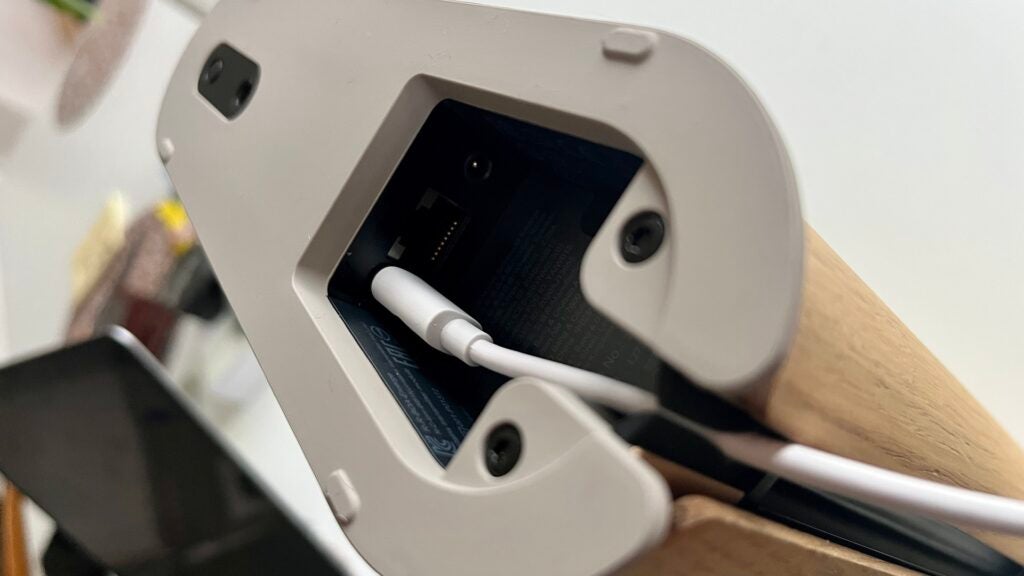
Physical connectivity consists of an Ethernet port, hybrid 3.5mm analogue or digital optical socket, a microUSB service port and USB-C for mains power.
The Emerge is another Bang & Olufsen product with an emphasis on longevity. Thanks to a modular design, it’s possible to swap or upgrade parts should the need arise. There’s a replaceable connectivity module inside, and it features enough processing headroom to be ready to receive updates and/or fresh features for many a year.
And should the worst happen and it become outdated or reach its performance limit, it can be swapped for the module that represents the state of the Bang & Olufsen art at that particular time.
Sound Quality
- Smooth frequency integration
- Good detail levels and fine rhythmic expression
- Could be more assertive where dynamics and treble sounds are concerned
The control app takes next-to-no time to calibrate the Beosound Emerge to the environment in which you’ve positioned it, and it makes it similarly swift and simple to get some music playing.
So it’s with a selection of radio stations streaming via the Bang & Olufsen Radio service (mostly the UK’s BBC 6 Music and France’s FIP – I’m of a certain age, after all), music via Deezer integrated into the app (PJ Harvey’s 50ft Queenie and Rude Boy Dub by King Tubby in particular), and further music from TIDAL via Bluetooth (Neil Young’s Rockin’ in the Free World and In the Sky and On the Ground by Nils Frahm), that the Emerge quite readily reveals itself.
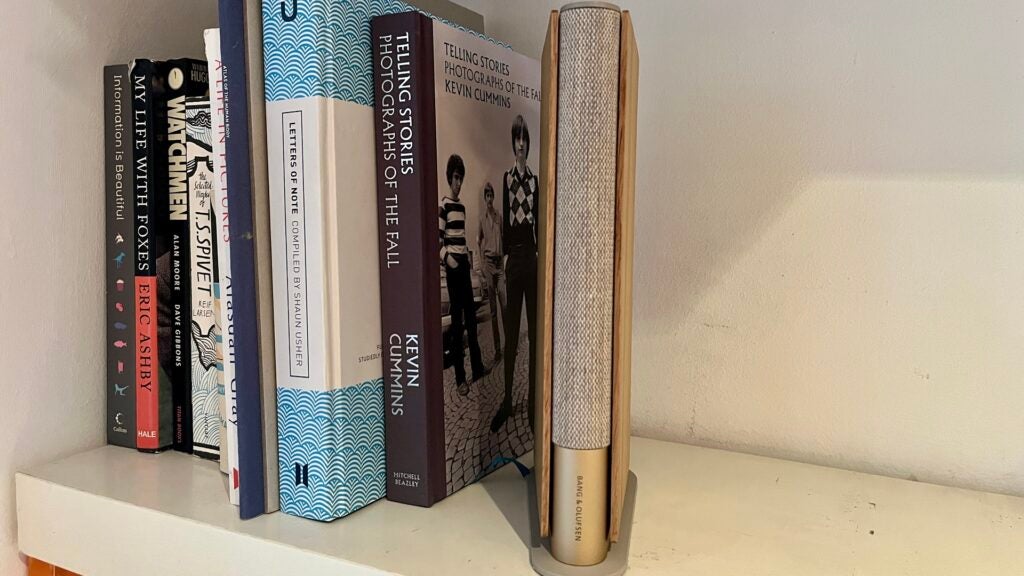
Most immediately impressive is the integration of the frequency range. A frequency response of 45Hz to 22kHz, provided by a trio of drivers, isn’t always a recipe for smooth integration – but the Emerge hides its crossover points well, and consequently there’s a unity and completeness to the Beosound’s presentation that’s in no way a given from products like this.
Tonality is similarly consistent, and similarly satisfying as a result. Leave the EQ adjustment alone and the sound is just slightly on the warm, rich side of neutral – but the app offers you a couple of ways of dialling this out if you don’t like it. And anyway, this balance quite nicely matches the speaker’s visual aesthetic.
Low frequency extension is respectable, and low-end sounds are nicely shaped and properly controlled. Edges are more-or-less straight, attack and decay is dealt with confidently – only when attempting to deal with properly droning bass a la King Tubby does the Emerge show any signs of stress.
Bang & Olufsen, to its credit, has not gone down the wide and well-travelled road that allows speakers to use bass and shorthand for excitement – instead, the Emerge generates a respectable amount of punch without losing the run of itself.
The midrange is properly informative, thanks to high detail levels and impressive resolution. Despite the claims for 180-degree, ultra-wide sound, a single Emerge doesn’t sound especially expansive, and can sometimes get a little flustered by dense or compressed recordings, vocalists usually have enough space in which to operate. And because the low end is so well controlled, they’re never in any danger from ill-disciplined bass.
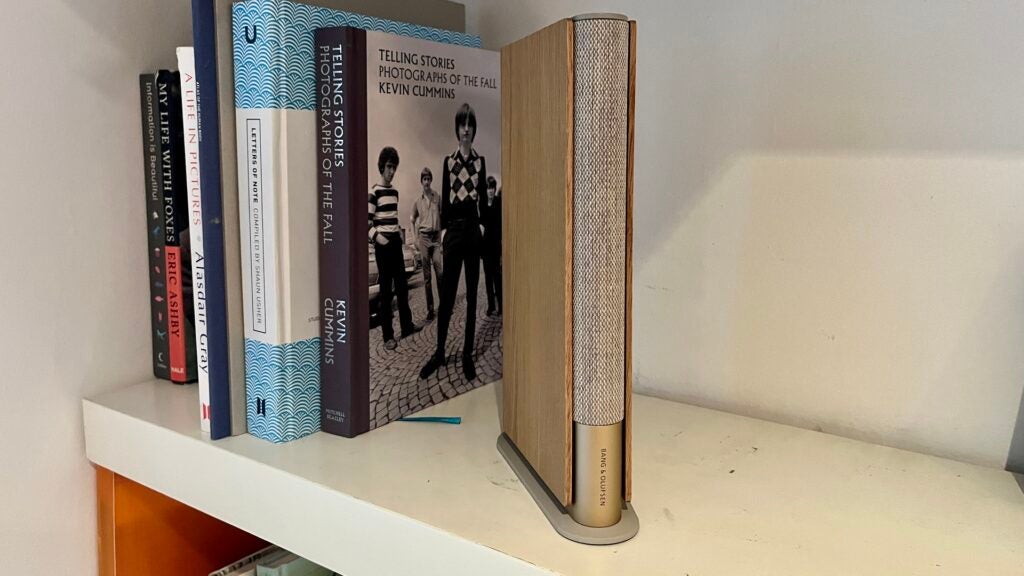
At the top end, the Beosound is just a little circumspect. That’s preferable to hardness or splashiness, of course – but treble sounds could definitely be a little more assertive. It’s a sensible balance, on the whole, but that’s not the same as saying it’s ideal.
Rhythmic expression is good, thanks in large part to those full-figured, properly controlled low frequencies. The Emerge handles tempo and basic momentum well, and is a natural and quite sinuous listen as a result.
Low-level dynamics, the sort that become apparent when listening to Nils Frahm’s solo piano, are expressed well too. But the big dynamic shifts in the PJ Harvey recording (which goes from quiet to loud to EXTREMELY loud in very short order) aren’t handled quite so confidently – the Emerge lacks just a little headroom.
Combine this with the relatively confined soundstage and the accompanying lack of outright scale, and the Beosound isn’t quite as intense or immersive a listen as some price-comparable rivals. But at least the Emerge has some rivals that are price-comparable – that’s not always something you can say about Bang & Olufsen products.
Latest deals
Should you buy it?
The combination of sound quality, physical discretion and singular design appeals: This is an uncommon mixture of virtues at the best of times.
You think big money should automatically equal big sound: The Emerge has a lot of sonic virtues, but ‘scale’ is not especially high on the list.
Final Thoughts
It’s normally quite easy to undermine Bang & Olufsen products simply by pointing out how much more expensive they are than equivalent products from pretty much any other manufacturer. That’s not possible with the Beosound Emerge – and it’s got plenty going for it beyond a realistic price-tag, too.
For once, then, here’s a B&O product that competes across the board – so if you’ve ever fancied a slice of the Bang & Olufsen action, you could do an awful lot worse.
How we test
We test every wireless speaker we review thoroughly over an extended period of time. We use industry standard tests to compare features properly. We’ll always tell you what we find. We never, ever, accept money to review a product.
Find out more about how we test in our ethics policy.
Tested for more than a week
Tested with real world use
FAQs
The Beosound Emerge originally come in Gold tone version and Black Anthracite, but the latter colour choice is no longer available.
Full specs
Sustainability
Trusted Reviews’ holds the fact that global warming is not a myth as a core value and will continuously endeavour to help protect our planet from harm in its business practices.
As part of this mission, whenever we review a product we send the company a series of questions to help us gauge and make transparent the impact the device has on the environment.
We currently haven’t received answers to the questions on this product, but will update this page the moment we do. You can see a detailed breakdown of the questions we ask and why in our sustainability info page.


